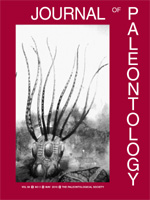Rudists are a principal biotic component of Cretaceous carbonates in Tibet and in the Western Tarim Basin. Barremian to Maastrichtian carbonate units are widespread on the northern margin of the Indian Plate and in Tethyan tectonic slices that were welded onto Eurasia in successive stages during the Late Cretaceous and Paleogene. In far northwestern Tibet, Barremian-Cenomanian endemic rudists and cosmopolitan orbitolinid foraminifera occupied isolated carbonate platforms in the eastern Tethys. Rudists, corals, and stromatoporoids composed bioherms up to 10 m thick and several kilometers in lateral extent. A unique endemic requieniid rudist, Rutonia, is compared to morphologically similar but older, less derived genera. Associated specimens in this assemblage are indeterminate requieniid valves, monopleurids, and two genera with three radiolitid species that are re-described and taxonomic positions re-evaluated. In southern Tibet, mainly endemic Campanian-Maastrichtian radiolitid rudists and cosmopolitan larger benthic foraminifera contributed to carbonate shelves on the northern Indian Plate near the Cretaceous equator. In the Western Tarim Basin Cenomanian strata yield Tethyan rudist species.
Coiling morphometric analysis using the three-dimensional morphology Raup diagram shows that Requieniidae valves in contact with the substrate are convergent with the basic gastropod shell. More derived strongly coiled, younger requieniids were adapted to encrusting or semi-infaunal habits. Stratigraphic analysis confirms that Requieniidae diversity crises coincided with Cretaceous oceanic anoxic events
Two end members of valve geometry each appear to be primitive and derived characters respectively and separate the family Requieniidae into two clades that are here recognized as two new subfamilies. The end members are defined by the coiling geometry, whether the spire is close to the plane of commissure or it is translated along the coiling axis and by myophore structures. The older matheroniform clade has a low spirogyrate LV that is translated slightly from the commissure along the coiling axis; this group is composed of Matheronia (and its subgenus Monnieria), Hypelasma, Lovetchenia, Rutonia, and Kugleria. Genera in the younger clade have a tall trochospiral LV that is translated along the coiling axis and consists of Requienia, Toucasia, Pseudotoucasia, Apricardia, Bayleoidea, and Bayleia. Claditics support these relationships.





